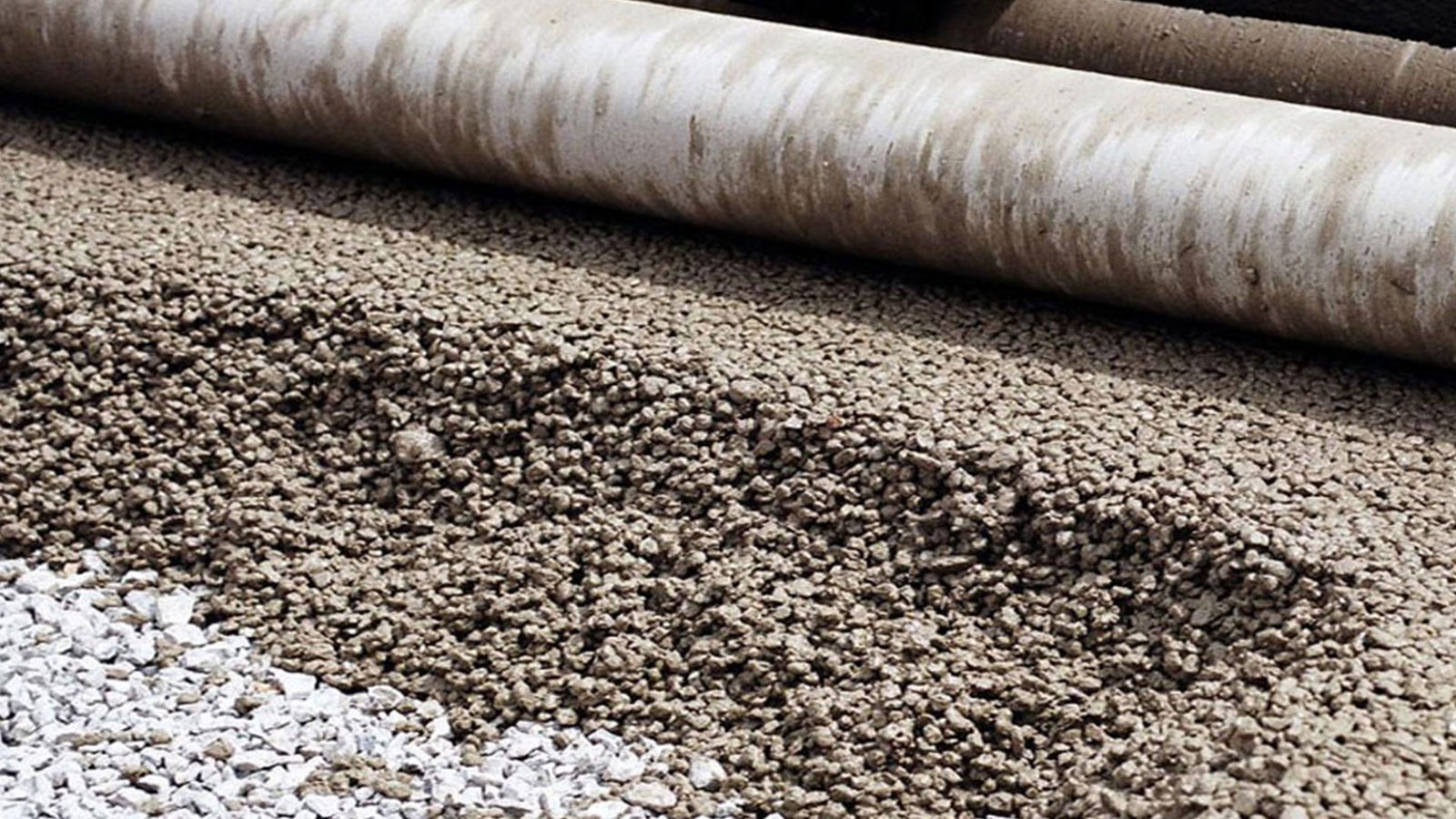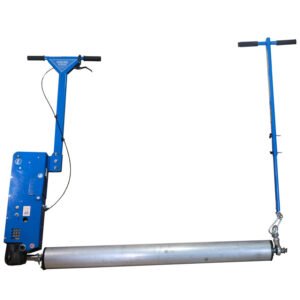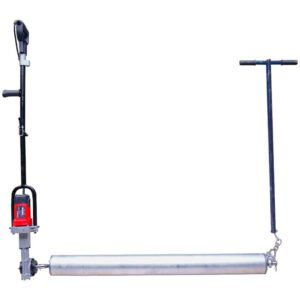Are you worried about concrete cracking, aggregate sinking, or uneven slopes in your construction projects? The Concrete Roller Screed could be your solution! This article highlights its advantages, such as enhanced strength by optimizing the water-cement ratio and improved flexibility for various concrete types. Plus, it can help you reduce labor costs.
Let’s explore this invaluable tool that can transform your construction journey!
What is a Concrete Roller Screed?
The Concrete Roller Screed is a specialized device designed to level concrete effectively. It uses a rotating roller to evenly distribute the concrete paste during pouring, significantly improving the quality and durability of the finished surface. Unlike traditional vibrating levelers, this screed operates without vibrations, keeping larger aggregates on the surface and resulting in a stronger concrete slab.
Additionally, the Concrete Roller Screed reduces the water-cement ratio of the mix, enhancing the density and durability of the concrete. Its adaptability allows it to handle various leveling widths, and it features a connectable roller system for length adjustments.
For projects requiring unique shapes, the integrated central axis device enables the easy construction of circular foundations. Its versatility also accommodates ordinary and permeable concrete, making it ideal for slope construction, preventing slippage and ensuring stability.
Concrete Roller Screed in Europe
European concrete construction faces challenges such as strict environmental regulations, high-quality standards, and the demand for durable materials. The Concrete Roller Screed addresses these issues by ensuring strong, long-lasting concrete without compromising on material quality.
Given Europe’s varied climate conditions, construction often occurs under fluctuating humidity and temperature levels. The Roller Screed adapts its rotation and travel speeds to accommodate different concrete slumps, facilitating smooth operations even during adverse weather. This flexibility boosts efficiency and minimizes delays.
Moreover, its low noise production and user-friendly operation make it particularly suitable for urban construction, helping to tackle the labor shortages prevalent in Europe. As a result, the Roller Screed has become a preferred choice for concrete leveling across the continent due to its efficiency, environmental benefits, and ease of use.
Why Use Concrete Roller Screed? 12 Key Features

The Concrete Roller Screed is an effective tool in modern concrete construction, offering numerous advantages for pouring operations thanks to its innovative design and functionality. Here are its 12 key features and the practical benefits they provide:
Optimizes Surface Water-Cement Ratio
The rotating roller brings the concrete paste (not the water) to the surface, minimizing the surface water-cement ratio. This reduction helps decrease shrinkage cracks while enhancing the strength and durability of the concrete slab.
Retains Large Aggregates
Utilizing a non-vibration principle prevents aggregates from sinking, keeping larger particles on the surface. This feature enhances compression resistance and wear resistance, making it ideal for high-strength applications like industrial floors.
Facilitates Circular Construction
The central axis design allows for efficient circular foundation work (e.g., for barns and oil tanks) without the need for complex formwork, which helps lower labor costs.
Multi-Function Roller Options
Specially shaped rollers, such as V-shaped and U-shaped ones, can create grooves or curbs in one pass, reducing the need for additional finishing work.
Suitable for Permeable Concrete
The uniform compaction characteristics prevent clogging of permeable pores, making the screed an excellent choice for permeable pavements, such as those used in sponge city projects.
Stable Slope Construction
The vibration-free operation prevents the concrete slurry from sliding, ensuring uniform pouring on slopes like dams and ramps.
Adaptable to Complex Terrain
Its lightweight design allows it to navigate suspended ground, large slopes, and extensive areas, such as bridges and stadium stands.
Versatile Power Source Options
With options for electric, gasoline, battery, or hydraulic power, it meets environmental requirements for indoor use or can be utilized in remote construction sites with fuel power.
Robust Slump Compatibility
By adjusting the rotation and movement speeds, the screed can effectively work with both wet and low-slump concrete, including dry hard mixes.
Meets Compliance Standards
It complies with the construction specifications of the American Cement Association for high-slump concrete (>3 inches), mitigating the risk of segregation caused by vibration.
Ergonomic Design
The design minimizes the need for workers to bend frequently, reducing strain on the waist and enhancing comfort during extended use.
Modular Expansion
The system can be connected to roller systems of various lengths, allowing it to flexibly adapt to leveling needs, from narrow ditches to ultra-wide warehouse floors.
This comprehensive set of features makes the Concrete Roller Screed a valuable asset in achieving efficient and high-quality concrete construction.
Concrete Roller Screed vs Vibratory Screed
| Comparison Dimension | Concrete Drum Leveling Machine (Drum-Type Paver) | Vibrating Leveling Machine (Vibrating Paver) |
|---|---|---|
| Working Principle | Rotating drum compacts concrete slime without vibration | Relies on high-frequency vibration to lift water from the concrete surface |
| Surface Water-Cement Ratio | Reduces and enhances concrete strength | May cause excessive water on the concrete surface, increasing the risk of cracking |
| Aggregate Distribution | Large aggregates remain on the surface, enhancing compressive strength | Large aggregates tend to sink, leading to excess slurry on the surface |
| Construction Preparation | Suitable for various slump levels and turning operations | Limited to low slump concrete, with lower construction flexibility |
| Construction Matrix | Suitable, with no risk of concrete slip | Not suitable; vibration may cause the concrete slurry to slide and become uneven |
| Permeable Concrete Capability | Best choice | May compromise permeability, suitable for traditional concrete |
| Ergonomic Design | Operation is unnecessary, reducing labor intensity and burden | May lead to strain during long-term operation |
Choosing the Right Concrete Roller Screed in Europe
When purchasing a Concrete Roller Screed, it’s important to consider several factors, including power source, applicable scenarios, customization needs, and after-sales service, to ensure the equipment meets your construction requirements.
Power Source Selection
Gasoline Power: Ideal for large projects, offering strong power, high stability, and a low failure rate. This option is best for users who prefer traditional fuel equipment.
Hydraulic Power: Powered by a hydraulic station, this option can support heavier rollers and is suitable for high-intensity operations.
Battery Power: Featuring a cordless design for easy operation, this is a good choice for small to medium-sized projects or situations requiring high flexibility.
Electric Drive: Best for sites with a stable power supply, this option boasts low operating costs.
Customized Needs
Some brands offer customization services, such as different plugs for various types of steel pipes, specialized rollers for edge drains, or pivot designs for round concrete slabs. Be sure to confirm the availability of personalized configurations when making your purchase.
After-Sales Service
Typically, the warranty period is one year. It’s advisable to choose a brand with a comprehensive after-sales network to ensure timely maintenance and a steady supply of parts.
When purchasing a Roller Screed, European users need to pay attention to local market characteristics and supplier support in addition to conventional factors. First, power adaptability. European environmental regulations are relatively strict, so battery or electric models may be more popular, while gasoline or hydraulic models can still be used on large construction sites.
Common suppliers in Europe include: Marshalltown Spin Screed: It offers a variety of power options suitable for projects of different sizes. Bunyan Striker Roller Screed: It is known for its durability and high performance, suitable for high-intensity construction. Lura Screed: It focuses on innovative design and provides customized solutions. Allen: It has perfect after-sales service, suitable for customers who value long-term support. Finally, localized support, give priority to brands with distribution or service outlets in Europe to ensure a quick response to maintenance and technical support needs.
Conclusion
The Concrete Roller Screed is revolutionizing the concrete construction industry with its substantial benefits, including improved durability, reduced labor costs, and versatility in application. Its vibration-free design prevents segregation and enhances efficiency. Have you had experience with a Concrete Roller Screed? We invite you to share your thoughts or questions in the comments below!





